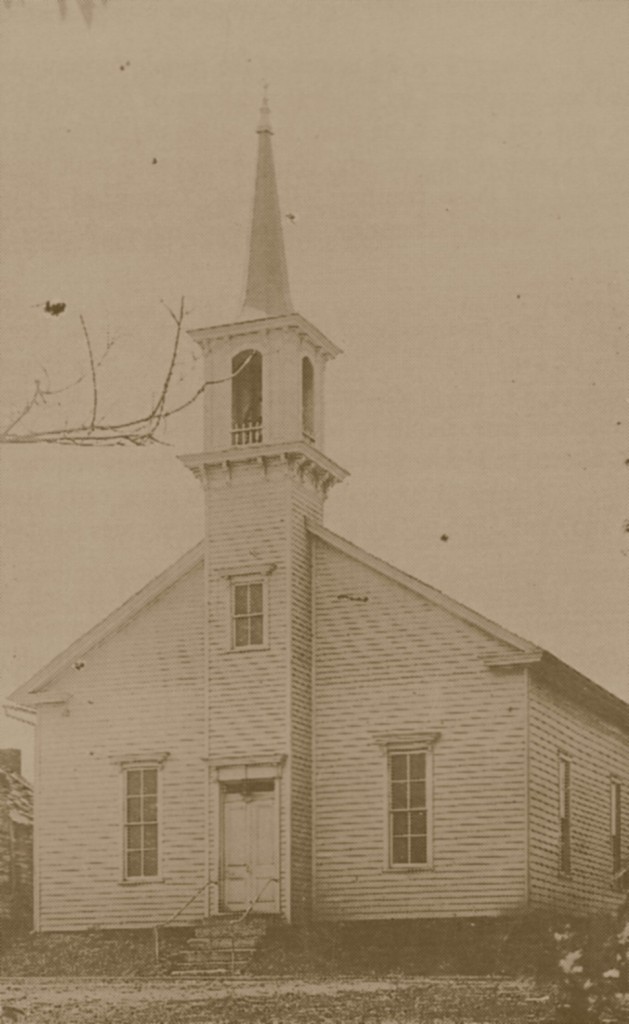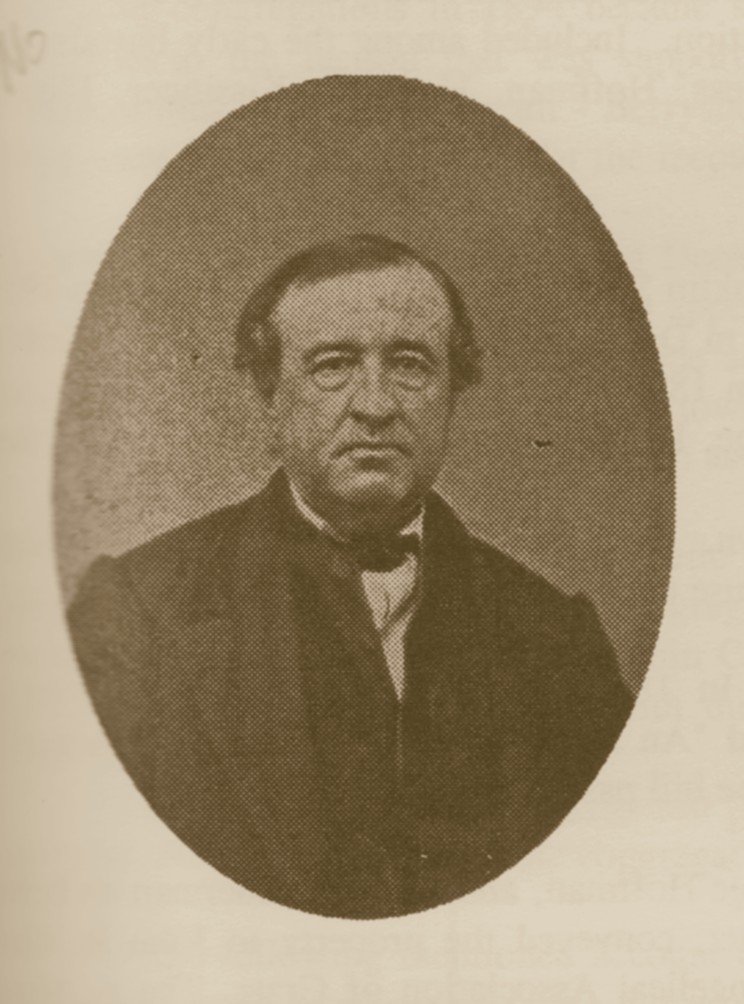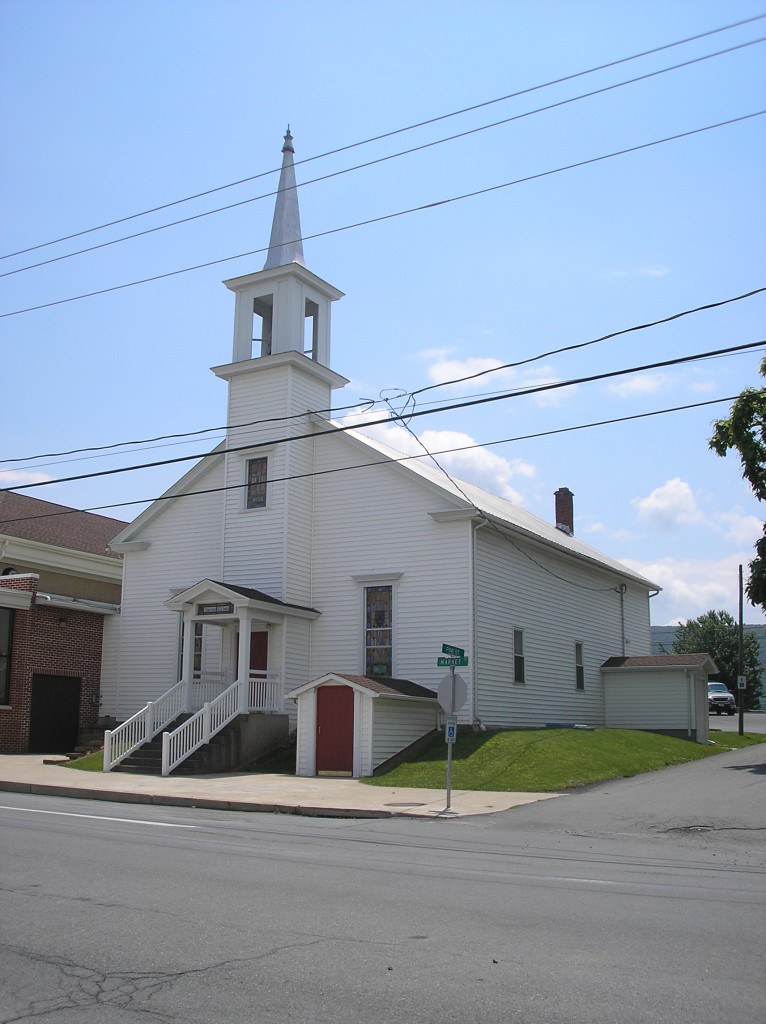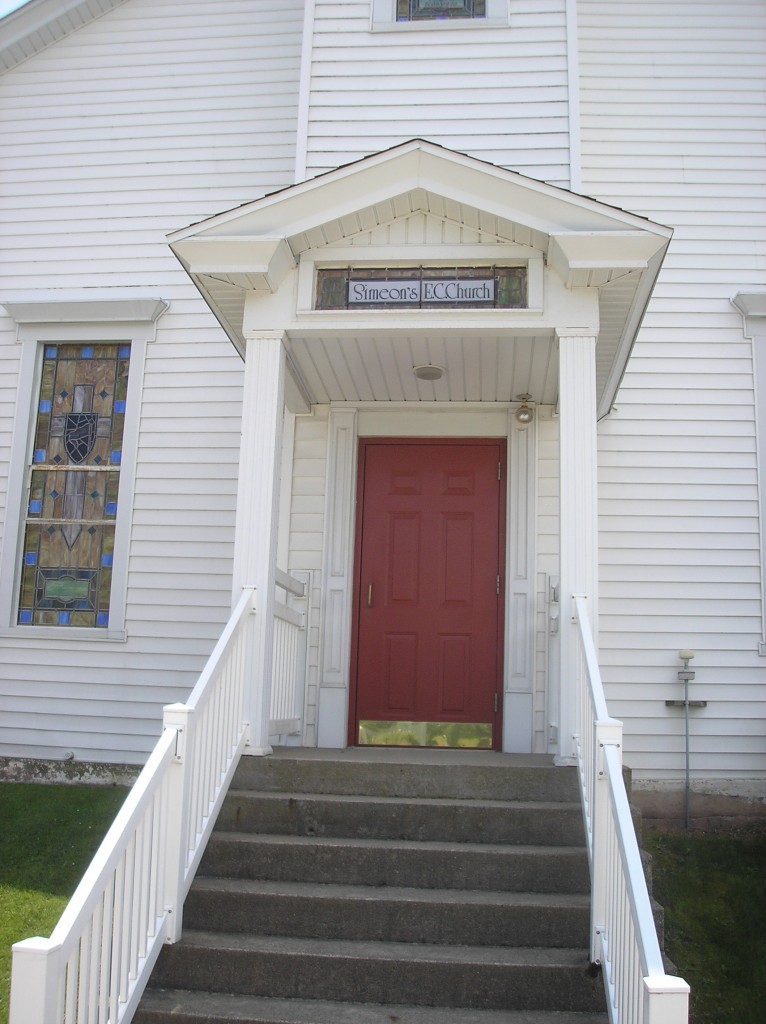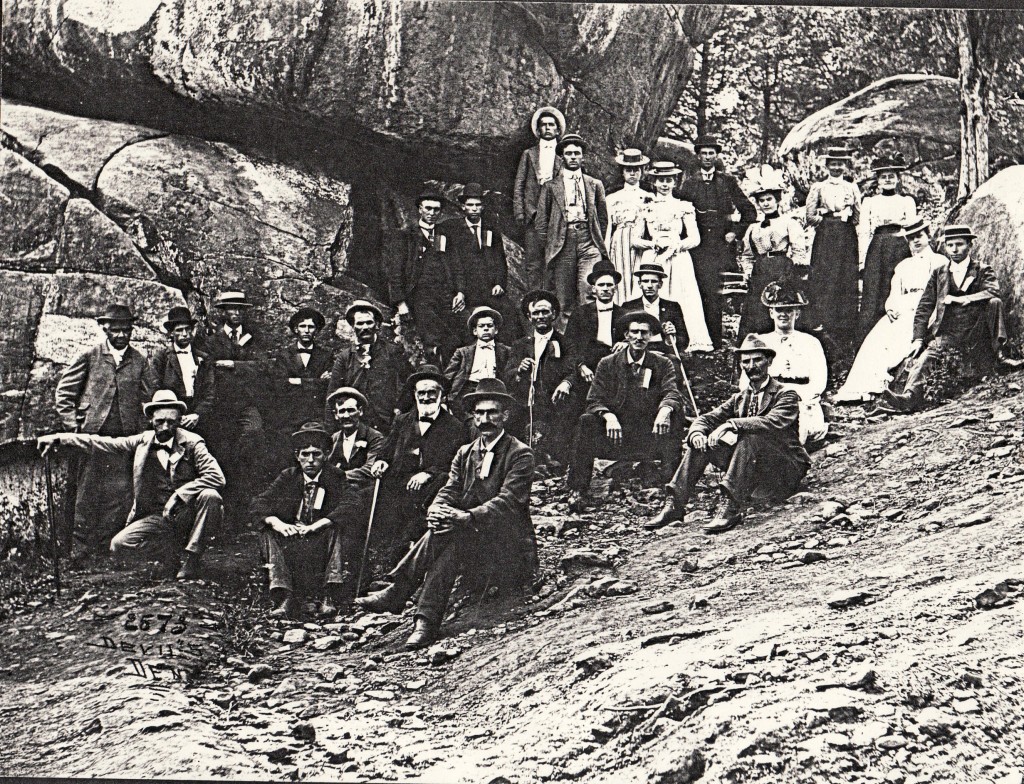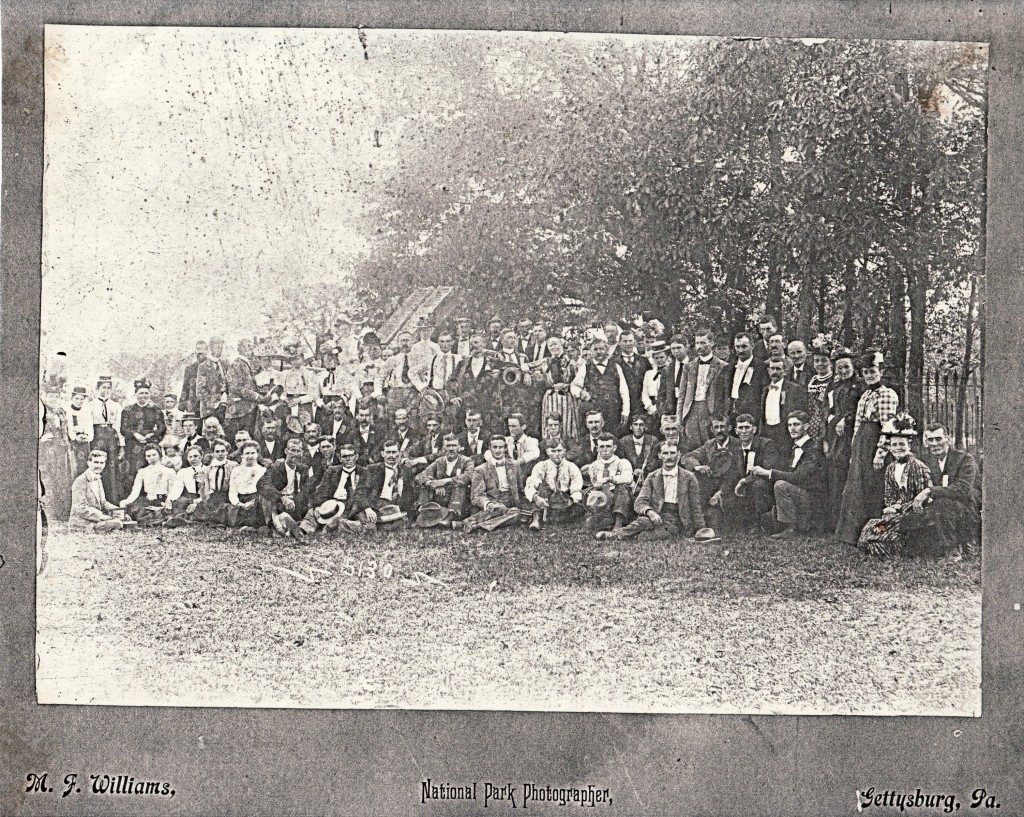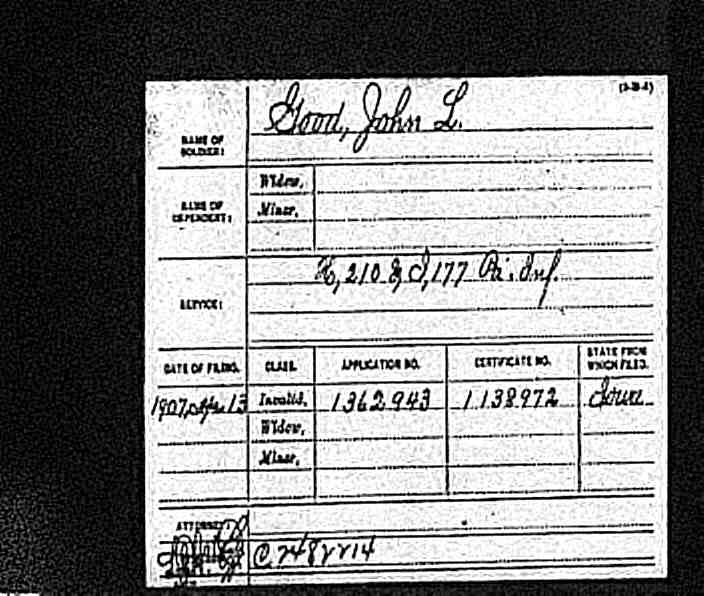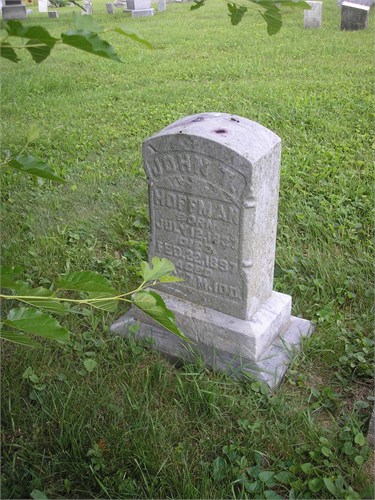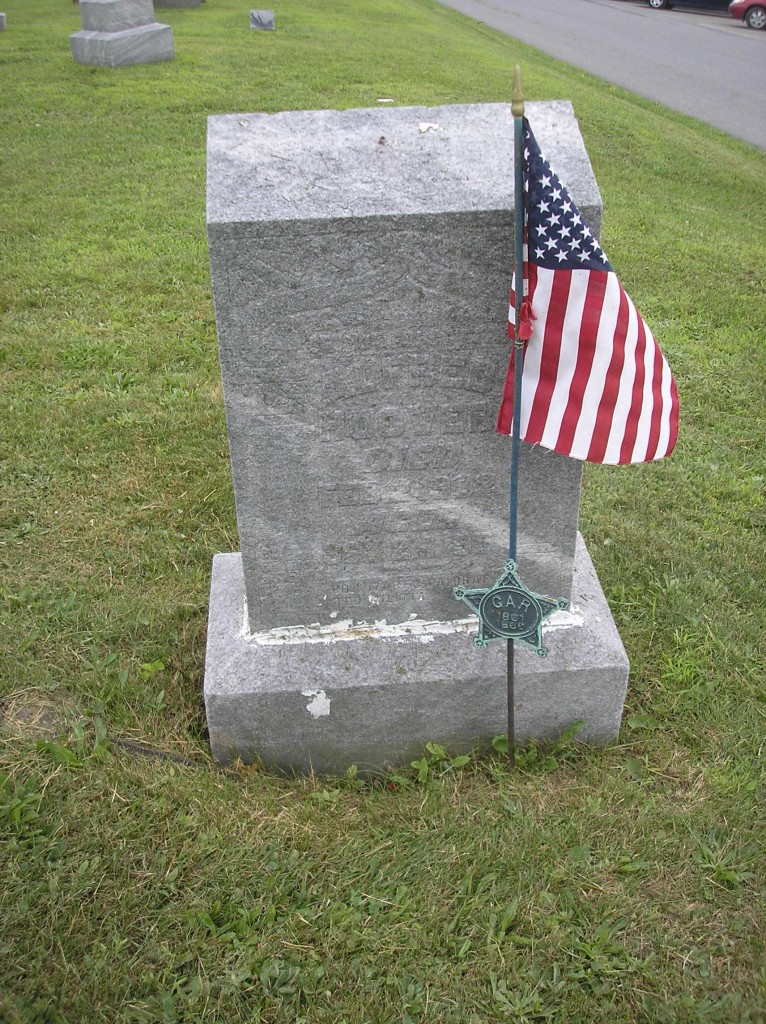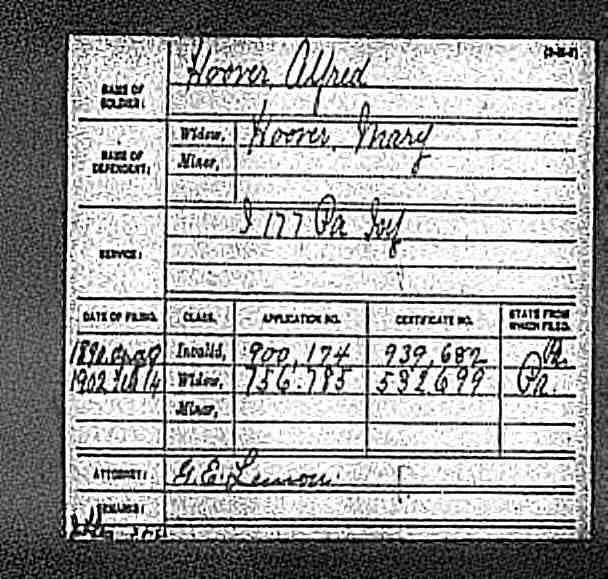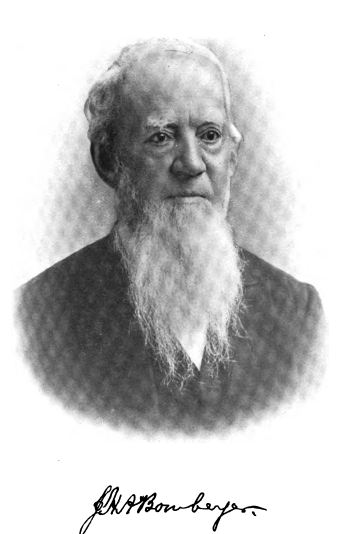Posted By Norman Gasbarro on November 27, 2011
Today, the blog post again continues to feature members of the 177th Pennsylvania Infantry, Company I, who served the full term of nine months and received honorable discharges on 5 August 1863. The research results presented here are based on preliminary data gathering on each of the members of the company and searches for Pension Index Cards that reference the pension application files that are available at the National Archives in Washington, D.C. Some of the members of this company has been previously discussed on blog posts here and reference to those posts are provided with links.
In addition, much has already been written on Benjamin J. Evitts, the elected captain of this company (click here for previous posts on Benjamin J. Evitts). Click here for previous posts on the 177th Pennsylvania Infantry.
The 177th Pennsylvania Infantry, Company I,was a drafted militia that served for nine months. No member of this militia was reported injured as a result of a military act, so, theoretically, nearly all the pension applications should be post-1890, when “age” became the most significant factor for the veteran to receive a pension. This should be reflected in the date of application on the Pension Index Card. If the veteran died before 1890, there probably was no application made by the veteran, but it is possible that a widow applied. In the column for “Certificate Number,” if no number appears, this would indicate that an application was made, but no pension was awarded. If a number appears in the “Certificate Number” column, it can be assumed that a pension was awarded, although the date of the award cannot be determined from the Pension Index Card.
——————————
PETER KLINGER (1838-1915)


In a previous post, Descendants of Johann Peter Klinger & Catharina Steinbruch, the service of Peter Klinger in the 177th Pennsylvania Infantry was noted, as was the service of four of his brothers in the Civil War. Additional information about Peter is now given here. In 1850, Peter was living with his parents in Mifflin Township, Dauphin County. The father, Philip Klinger was a farmer and an older brother Samuel Klinger was living at home and working as a laborer. In 1860, Peter Klinger was living with his widowed mother Catharina [Kauffman] Klinger in Lykens Township with an younger brother William Klinger in the household. Peter was working the family farm which was adjacent to the Muench farm where Margaret Muench lived. In 1861, Peter Klinger married Margaret Muench at Pillow, Dauphin County. When Peter was drafted in 1862, two of his brothers were drafted with him into the same regiment, the 177th Pennsylvania Infantry – older brother Samuel Klinger (see above and below) and older brother Philip Klinger Jr. (see below). When Peter left for the war, one child had already been born to him and his wife Margaret, Francis Klinger, born about 1861. Additional children were born during and after the war (dates approximate): Fietta Klinger (1863-?), Annie Klinger (1865-1925), Sallie Klinger (1867-1947), Kate Klinger (1871-?), Cora Klinger (1755-?), George Klinger (1876-?), and Charles Klinger (1878-1856). After the war, Peter Klinger returned to farming in Lykens Township and spent most of his remaining days on the farm collecting a pension for his Civil War service from about 1892 until his death in 1915. Peter Klinger is buried in Grand View Cemetery, Pillow, Dauphin County. All told, Peter Klinger and four of his brothers were Civil War veterans, a major contribution of one family in the Lykens Valley area!
——————————
SAMUEL KLINGER (1826-1897)
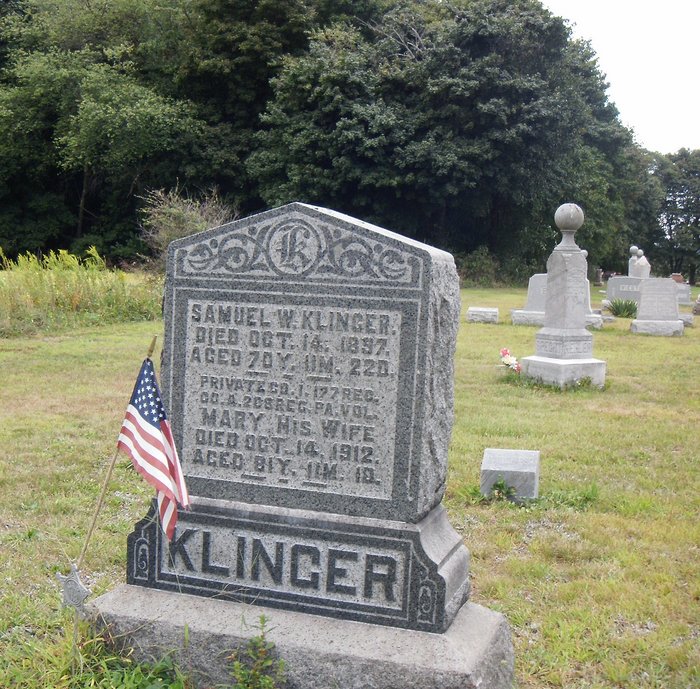
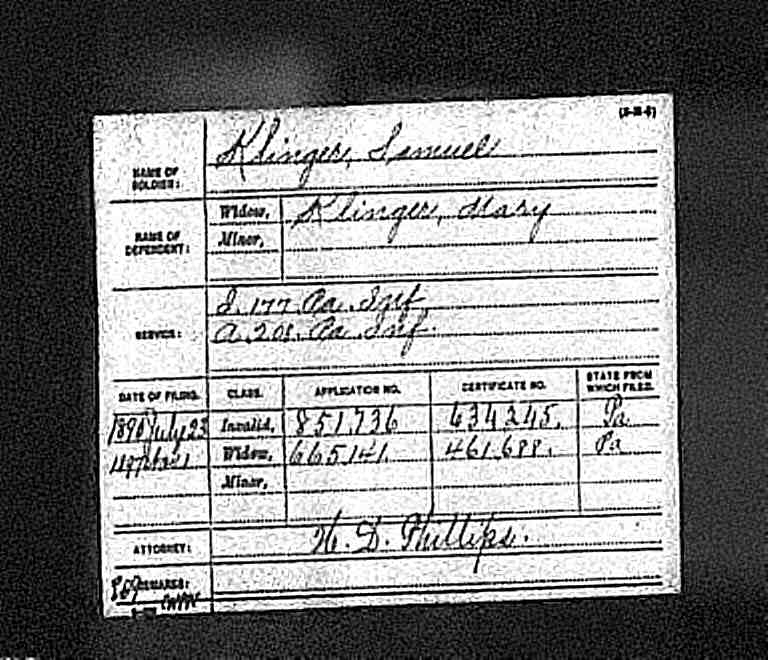
Samuel Klinger was the brother of Peter Klinger (see above) and his genealogy was previously reported in the post, Descendants of Johann Peter Klinger & Catharina Steinbruch. He was born in the area of Lykens Township and for most of his life resided in the Pillow area where he worked as a laborer. Samuel married Mary Shaffer, who was born about 1831, and by the time of the Civil War the couple had given birth to at least three children: Emma Klinger, born about 1854; Benjamin Klinger, born about 1860, and Agnes Klinger, born about 1862. Following his drafted service in the 177th Pennsylvania Infantry, Samuel enlisted in the 208th Pennsylvania Infantry, Company A. As can be seen from the Pension Index Card, Samuel died leaving a widow who was able to continue receiving the war pension until her death about 15 years after her husband. Both are buried in the Union Cemetery, Jordan Township, Northumberland County. He along with four of his brothers were Civil War veterans.
——————————
PHILIP KLINGER Jr. (1836-1935)
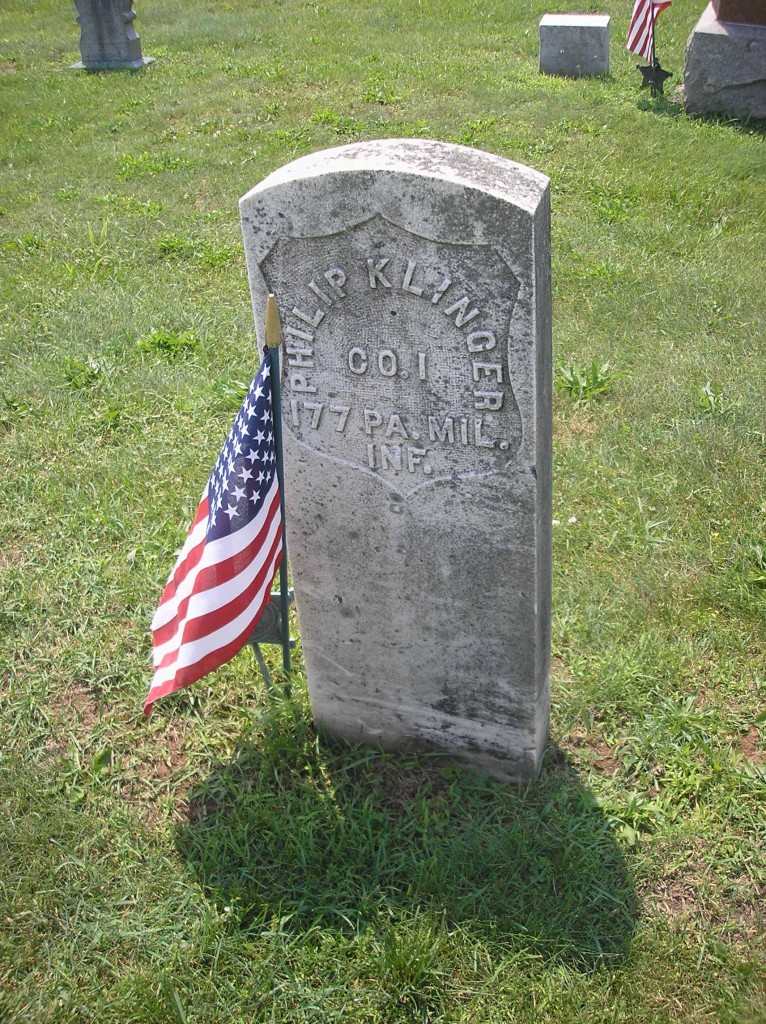

Philip Klinger was also previously mentioned in the post, Descendants of Johann Peter Klinger & Catharina Steinbruch and also as one of four brothers who were Civil War veterans, three of whom served in the 177th Pennsylvania Infantry, Company I (see above). Philip Klinger was born in Lykens Township, Dauphin County, Pennsylvania in 1836. In 1855 he married Phoebe Ann Koch at Berrysburg. At the time of the Civil War, it appears from the records that three young children were in the family: Sarah Klinger, born 1856; William Henry Klinger, born 1859; and Priscilla Klinger, born 1862. After his service in the 177th Pennsylvania Infantry, Company I, Philip Klinger joined the 76th Pennsylvania Infantry, Company H, in Luzerne County as a substitute on 12 October 1864 and served until discharge on 18 July 1865. After the war, he worked as a day laborer in Lykens Township and in Hubley Township, Schuylkill County. Philip Klinger is buried at Zion (Klinger) Church Cemetery, Erdman, Lykens Township. There is a “military issue” stone marker on his grave which not indicate the years of birth and death. Only the 177th Pennsylvania Infantry, Company I, is noted, although his pension record also indicates service in the 76th Pennsylvania Infantry, Company H. Some sources indicate that Philip Klinger died at the age of 99, but this has not yet been confirmed with other sources. Also, Philip Klinger reported service in the 73rd Pennsylvania Infantry when the 1890 census was taken, although that has not been confirmed and the information conflicts with the Pension Index Card.
—————————–
JOSEPH KLINGER (1844-1897)

Joseph Klinger was a close relation of the three Klinger brothers named above who also served in the 177th Pennsylvania Infantry. Information on him was previously reported in the post, Descendants of Johann Peter Klinger & Catharina Steinbruch. Joseph Klinger was born in the Lykens Township area in 1844, the son of John Adam Klinger (1811-1872) and Susanna [Romberger] Klinger (1815-1891). John Adam Klinger was a miller in Lykens Township but Joseph decided to be laborer, an occupation which he pursued in Lykens Township and Upper Paxton Township up to the time of his service in the Civil War. During the war, he was drafted into the 177th Pennsylvania Infantry, Company I, and following that service joined the 210th Pennsylvania Infantry, Company H, from 6 September 1864 through discharge on 30 May 1865. Upon return from the war, he married Sarah Zimmerman in Washington Township, Dauphin County, the Rev. Jeremiah Shindel performing the ceremony. They had several children while Joseph worked as a laborer in the coal mines and the family lived in Williams Township and Wiconisco. Joseph died in 1897 of a cardiac paralysis caused by typhoid fever and was buried in Calvary United Methodist Cemetery, Wiconisco. He may be buried in an unmarked grave as his stone has not yet been located. Sarah died in 1936, collecting the widow’s pension until her death.
—————————–
JORIAS KISSINGER (1840-1882)

Jorias Kissinger is found in the records as Jerius, Jarius, Josias, and Jerias. He was born in 1840 in Dauphin County, Pennsylvania, the son of Jonas Kissinger (1817-1903) and Rebecca [Dreher] Kissinger (1817-?). In the Civil War, he served first with the drafted militia, the 177th Pennsylvania Infantry, and after his service there, he enlisted in the 210th Pennsylvania Infantry, Company H, on 16 September 1864. On 1 April 1865, he as promoted to Sergeant. His service ended on 30 May 1865 when he was mustered out with his company. Upon return from the war, he married Sarah Hartman in December 1865 and then proceeded to settle down to the life of a farmer in Lykens Township, Washington Township, and the Gratz area. Eight children were born to this couple between 1866 and 1881. Jorias Kissinger died in 1882 and is buried in Gratz Union Cemetery.
No Pension Index Card has been located for Jorias Kissinger, and the initial speculation was that this was because he died in 1882, before the pension rules were relaxed. But this is a curious problem, because at the time of his death, he left a widow, and according to the census of 1880, there were several children in the household who were under the age of 16 who would have been eligible for support. His widow Sarah lived to 1931 and there is no known record that she remarried. Is so, it may have disqualified her for a pension. Another curious issue is that the Civil War Research Project has some copies of papers which appear to be from a widow’s pension application file for Sarah [Hartman] Kissinger, papers which name the minor children and show that she was receiving a pension and that pension was increased to $20 per month in 1916.
——————————
The continuation of the “Honorable Discharges” of the 177th Pennsylvania Infantry, Company I, will appear in early December 2011.
Category: Research, Resources, Stories |
3 Comments »
Tags: Berrysburg, Erdman, Gratz Borough, Hartman family, Hubley Township, Jordan Township, Kauffman family, Kissinger family, Klinger family, Koch family, Lykens Township, Muench family, Pillow, Regiments, Romberger family, Shaffer family, Washington Township, Wiconisco, Williams Township, Women, Zimmerman family
 ;
;

